Analysis information
Time played: more than 70 hours
Platform: nintendoswitch
In the Hyrule sky, a dragon whirls in graceful circles. Its yellow mane, like a lion’s, billows in the wind as it thrusts through the clouds, catching my eye from green plains to floating islands in the air. I watch from a distance until the creature dives to the ground and I lose sight of it. Perhaps it flies low in a canyon or across one of the chasms that dot the landscape, serving as entrances to the dark cavernous underworld beneath the earth’s crust.
I wait a moment to see if the dragon resurfaces. When he doesn’t, I continue my long walk to Kakariko village, the next stop in my search for Princess Zelda. The dragon is not something to dwell on; is just another of the many beautiful sights in The Legend of Zelda: Tears of the Kingdom.
Following in the footsteps of 2017’s Breath of the Wild, the open-world game that launched the Nintendo Switch and served as the swan song for Wii U, Tears of the Kingdom continues the story of Zelda’s loyal swordsman Link, bringing a massive world to explore, new abilities to master, and a significant evolution of the physics- and chemistry-based sandbox at the heart of the Switch launch title.
one up, one down
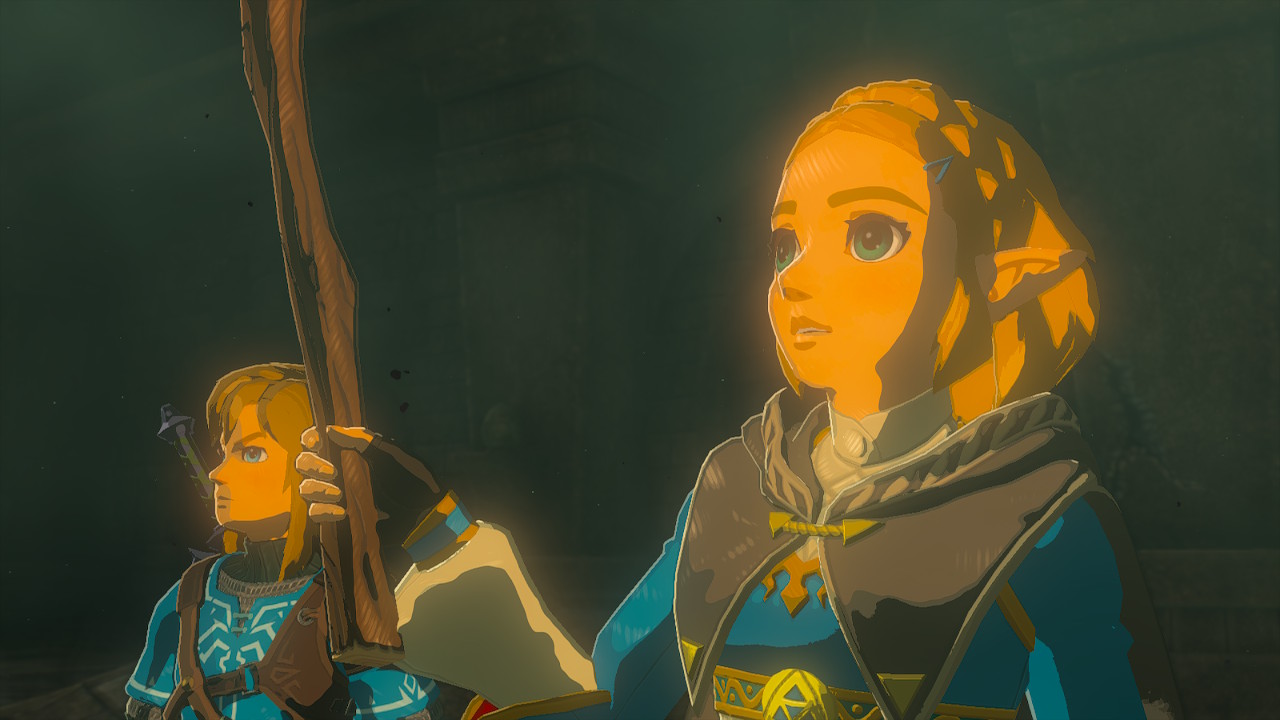
Tears of the Kingdom begins with Link and Zelda exploring the dungeons of Hyrule Castle. Though Calamity Ganon was defeated at the end of Breath of the Wild, the kingdom is still not at peace and the pair are investigating reports of a toxic cloud seeping through the palace.
They find a mural in a hidden chamber that tells the story of the Zonai, an advanced race descended from the gods who arrived in Hyrule millennia earlier, where one of their numbers, Raaru, became the first king of the land. Raaru fought someone called the Demon King in The Prisoner War, but the story is cut short as a pile of rocks hides the last few panels of the mural.
Link and Zelda take an even deeper stairway and find a large cavern containing the source of the toxic darkness: a mummified corpse suspended in the air, impaled on a magical green gauntlet. As the two get closer, the mummy wakes up and attacks. The monster wraps itself around Link’s sword, Master Sword, tearing it apart before incinerating the hero’s arm. Zelda falls into her abyss and Link loses sight of her. Before the monster can kill him, the gauntlet teleports him away.
Link wakes up to find the world he knows has shattered. Hyrule Castle now floats above a great chasm on Earth, and mysterious islands float ominously in the sky. Holes have been opened in the ground, leading to a vast land shrouded in darkness beneath Hyrule, filled with toxic darkness and strange creatures.
However, all is not lost; The gauntlet that saved Link begins to speak and leads him in search of Princess Zelda, leading him to the four corners of Hyrule, where he will discover ancient elemental temples and allies in the fight against the ancient evil.
out with the old man
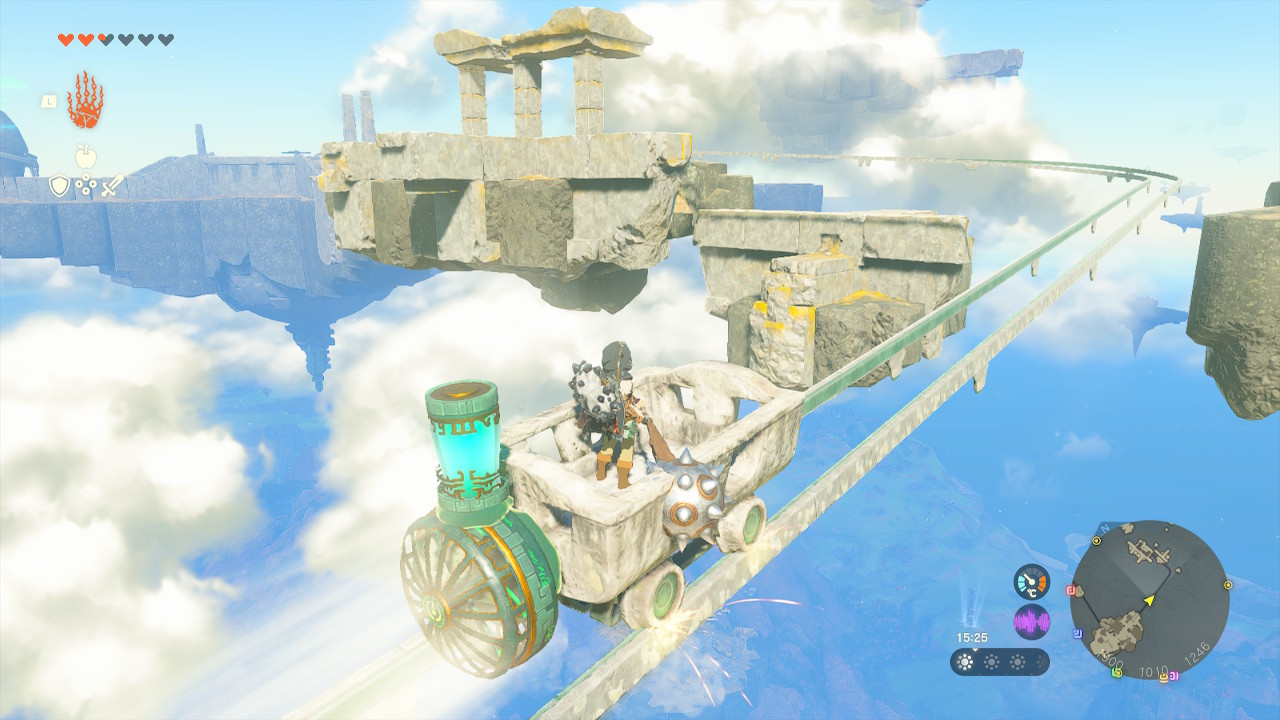
The developers of Breath of the Wild tore down and changed everything they thought was non-essential to a Zelda game. In the process, they turned the 30-year-old series into a physics- and chemistry-driven open-world sandbox, where you could light an arrow in a stove, throw it into the grass, and ignite a fire that would spread and create an air-blocker. heat that you could take to the sky with your paraglider. The same engine powers Tears of the Kingdom, but you get a whole new evolution of sandblasting tools.
You can no longer use your Sheikah Slate to conjure time bombs or create ice blocks from puddles of water. Instead, you have a new range of abilities, such as traveling vertically through solid materials, like a salmon going down a waterfall. You can also pause time and select an object to reverse it. You can use that power to rewind the movements of gear in a machine, change the direction of an elevator, for example, or send back the rock an enemy threw at you.
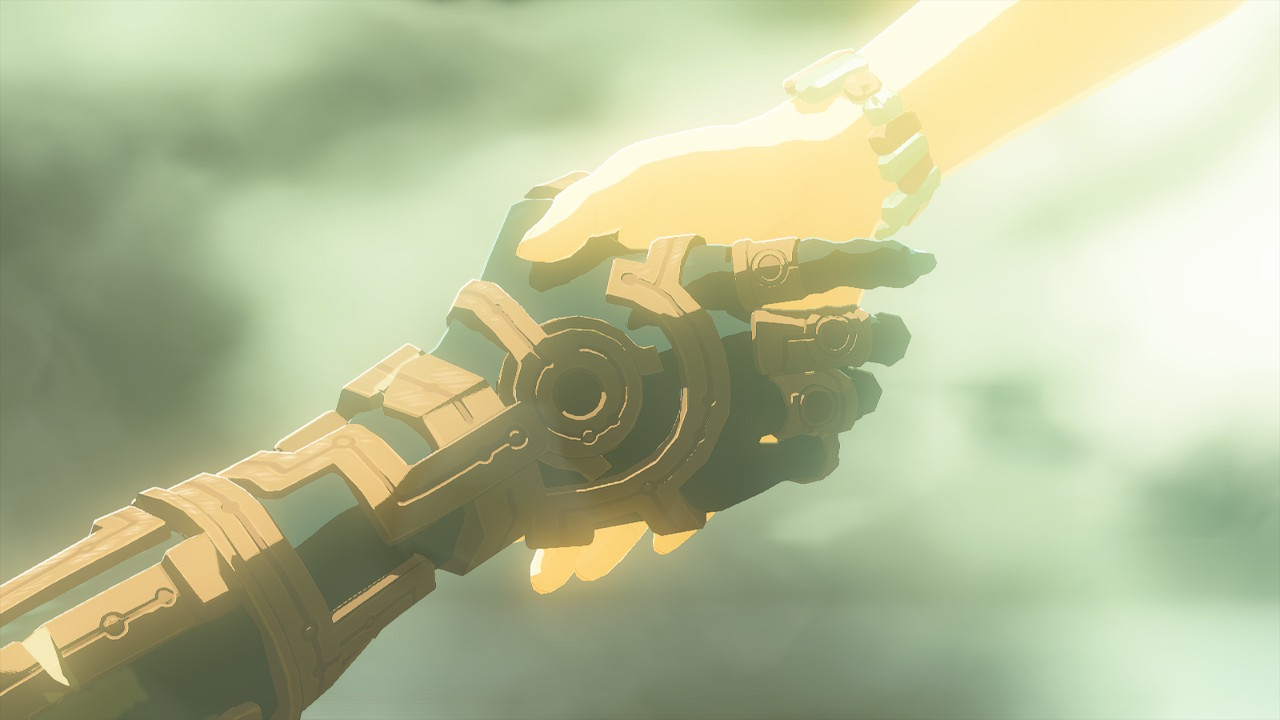
But the implications of those powers are minor compared to those of Fuse and Ultrahand. With Fuse, you can weld items onto weapons and shields, grafting the item’s attributes onto your equipment. While it sounds simple, this skill takes advantage of Tears of the Kingdom’s chemical engine. Fuse the horn of a fire-breathing Lizalfos to your spear and you’ll not only impale your enemies but also set them on fire.
With a little experimentation, you can create an arsenal of weapons that burn, stun, and freeze your enemies. You can also fuse objects with your arrows, turning them into homing arrows, bomb arrows, or, with the help of a flower found in the caves beneath Hyrule, an arrow that will turn your enemies against each other.
You can fuse armor to your shield to strengthen it or add a thorny bramble that damages enemies by blocking their attacks. However, my favorite fusion is perhaps the simplest: if you weld a Zonai rocket to a shield and lock it with the ZL button, the rocket launches you into the air, acting like one of NASA’s boosters.
Ultrahand lets you levitate objects in the world, lifting large blocks of stone like balls of paper and welding them together to create complex entities. Loose wheels and axles are assembled to form a wagon to be carried down a hill, wooden planks become a long bridge to cross a canyon, and shipping crates are stacked to create a ladder to climb to the roof of a building. Although it is a little difficult to control at first, power becomes an essential tool to dominate the environment.
Ultrahand brings Tears of the Kingdom to life as you begin to discover Zonai gadgets. They can be simple components, like a glider wing, battery, or sled, or more complicated, like a fan, flamethrower, or spring-loaded cannon. In your (ultra)hands, you can weld a fan to a board and turn it into a makeshift hovercraft, glue a balloon with a flame emitter to a wooden board and build a hot air balloon, or strap rockets to a sled and craft. .. Well, I’m not sure what you would call it, but it’s a lot of fun to drive.
Break in and enter
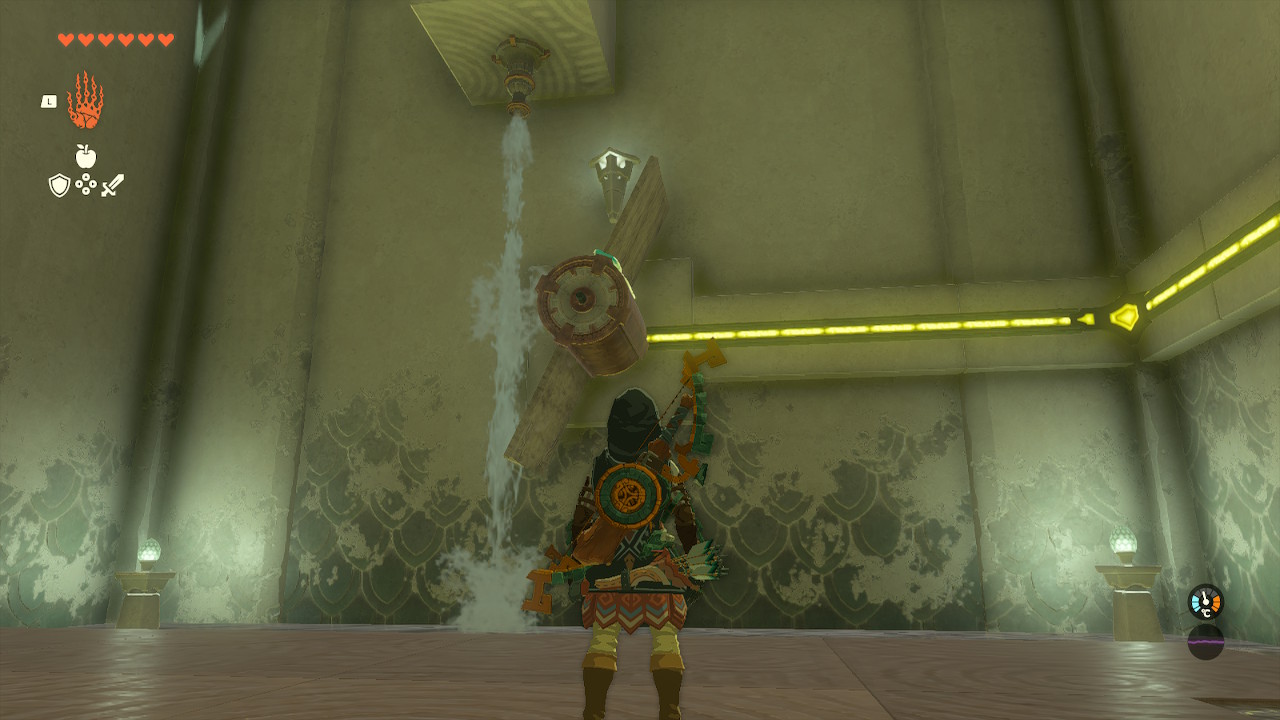
At temples and shrines, you use Zonai devices to build machines that solve specific problems, learning how objects interact with the physics of the sandbox. Completing the series of puzzles tucked into each of Tears of the Kingdom’s five temples had me walking around my apartment thinking I had the biggest brain in the world and that I was supposed to be an engineer. It’s like making the key fit a specific lock. In Hyrule, however, you can use the Zonai machines more as leverage.
He had to reach an island floating in the skies above Rito’s village. It was too high for me to climb, and even if I could get to the top, a ledge would prevent me from reaching it. It would just fall down the mountain. I knew there had to be a path to the island, but I couldn’t see which one it was. Rather than trying to figure it out, I searched my inventory for the Zonai devices I needed.
Later I realized that I could use my Ascent ability to travel to the island, but I didn’t even get frustrated about it…
It didn’t have a flame emitter, but it did have a balloon and a plank of wood to use as a basket. I had a flint and a bunch of wood in my backpack, so I dropped them on the board and struck the flint with my sword, which set the wood on fire, inflated the balloon, and almost floated me to the island. Needing to seize the moment, I strapped a rocket to my shield and leaped from the makeshift balloon, giving myself the height to glide over the island.
I later realized that I could use my Ascent ability to get on the island, but I didn’t even get frustrated about it, because Nintendo had given me the tools to open up the world and play the way I wanted.
Like the world of Hyrule, Tears of the Kingdom’s powers resemble those of Breath of the Wild, but now have many more layers and much greater depth.
One downside to this new technology is that it puts a lot of pressure on the Nintendo Switch. Particularly when you take on the encampments of the Yiga clan deep within Hyrule. Those pesky ninjas fight you with tricky Zonai vehicles and all the simultaneous calculations can cause severe framerate drops. I didn’t mind these occasional drops and saw them more as an indication of impending battle, but you might disagree if a sudden frame drop interrupts your immersion.
Fighting the elements

Tears of the Kingdom’s new tools build organically on the combat of Breath of the Wild. The basic moves remain the same: attack with Y, hold down the button to charge up your attack; capture your target and protect yourself with ZL; dodge and jump backward with X; and well-timed dodges are rewarded with a chance to counter your enemies attacks. But now, all those moves are combined with weapons you can fuse with elemental attributes.
You can brute force your way through combat, arming yourself with the largest sword in your arsenal and swinging it until all enemies around you are dead, but you can end combat much faster by combining your weapon with the Weakness of your enemy. Hit fire enemies with ice weapons, unarmored enemies with lightning weapons, and sensitive rocks with a stone hammer to turn them to dust.
The combat in Tears of the Kingdom is iconic and is an improvement over Breath of the Wild. The structure is the same, but everything is more chicha than before. The world of Hyrule, the combat, and the powers at your disposal pick up where Breath of the Wild left off, but Nintendo has taken them further with clever improvements.
The multi-level world wouldn’t be as fun to explore without the new vehicles you can build, the combat would be stale if it weren’t for the elemental fusions you can now play with, and the powers we learned in the last game wouldn’t be up to the task. the new Hyrule that Nintendo has built, but what we have in Tears of the Kingdom is recognizably similar to the abilities of the Sheikah Slate.
As Majora’s Mask was to Ocarina of Time, The Legend of Zelda: Tears of the Kingdom is a masterful evolution of the Nintendo Switch launch title, and if it proves to be the last major release on the console, it will be a finishing touch to the Nintendo Switch launch The best Nintendo console to date.
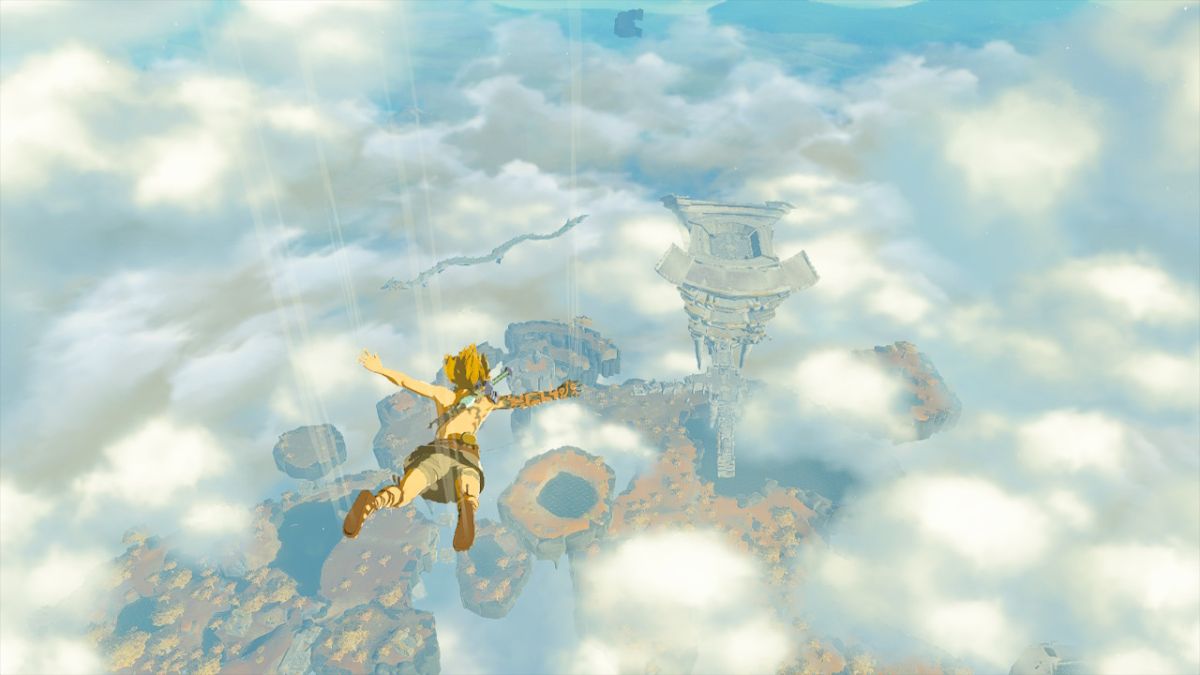
Leave a Reply